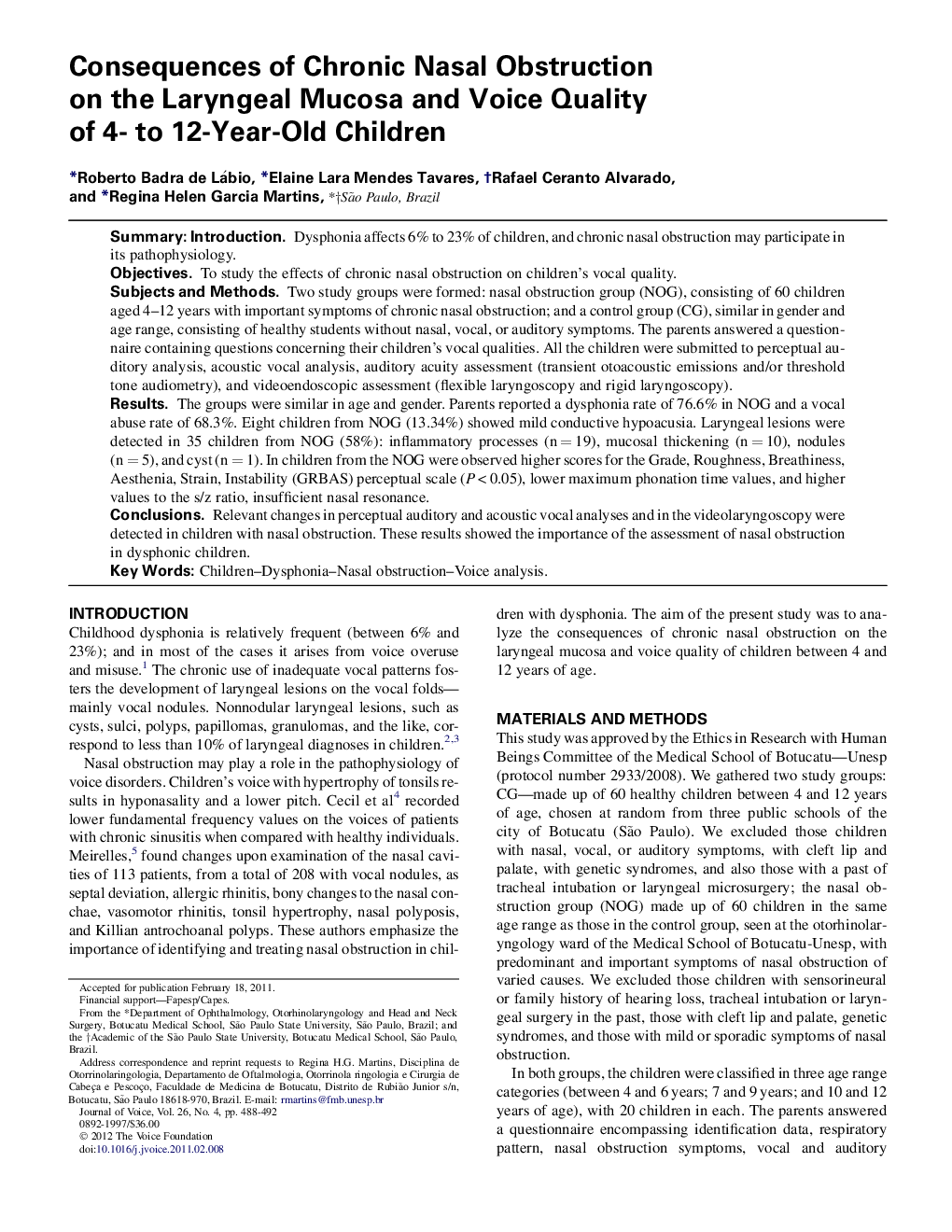| کد مقاله | کد نشریه | سال انتشار | مقاله انگلیسی | نسخه تمام متن |
|---|---|---|---|---|
| 1101825 | 953578 | 2012 | 5 صفحه PDF | دانلود رایگان |

SummaryIntroductionDysphonia affects 6% to 23% of children, and chronic nasal obstruction may participate in its pathophysiology.ObjectivesTo study the effects of chronic nasal obstruction on children’s vocal quality.Subjects and MethodsTwo study groups were formed: nasal obstruction group (NOG), consisting of 60 children aged 4–12 years with important symptoms of chronic nasal obstruction; and a control group (CG), similar in gender and age range, consisting of healthy students without nasal, vocal, or auditory symptoms. The parents answered a questionnaire containing questions concerning their children’s vocal qualities. All the children were submitted to perceptual auditory analysis, acoustic vocal analysis, auditory acuity assessment (transient otoacoustic emissions and/or threshold tone audiometry), and videoendoscopic assessment (flexible laryngoscopy and rigid laryngoscopy).ResultsThe groups were similar in age and gender. Parents reported a dysphonia rate of 76.6% in NOG and a vocal abuse rate of 68.3%. Eight children from NOG (13.34%) showed mild conductive hypoacusia. Laryngeal lesions were detected in 35 children from NOG (58%): inflammatory processes (n = 19), mucosal thickening (n = 10), nodules (n = 5), and cyst (n = 1). In children from the NOG were observed higher scores for the Grade, Roughness, Breathiness, Aesthenia, Strain, Instability (GRBAS) perceptual scale (P < 0.05), lower maximum phonation time values, and higher values to the s/z ratio, insufficient nasal resonance.ConclusionsRelevant changes in perceptual auditory and acoustic vocal analyses and in the videolaryngoscopy were detected in children with nasal obstruction. These results showed the importance of the assessment of nasal obstruction in dysphonic children.
Journal: Journal of Voice - Volume 26, Issue 4, July 2012, Pages 488–492